General Insights
Highlights
Scroll below the selected highlights for the full set of indicators.

Investment
Investment in energy efficiency over the past decades has shifted our economic, social, and environmental trajectory.

Decoupled Energy Consumption
From 1980 to today, the U.S. decoupled energy consumption and economic growth and doubled energy productivity (GDP per energy consumed).

Efficient Consumption
In large part as a result of energy efficiency, energy consumption has remained largely flat in spite of a growing population and increasing use of appliances and devices, and increasing vehicle miles traveled.

Efficiency Policies
Six key energy efficiency policies and programs, including vehicle, appliance, and equipment efficiency standards, ENERGY STAR®, utility sector energy efficiency programs, research, development, and demonstration (RD&D), and building codes, saved approximately 25 quads of energy in 2017 – this is approximately 20% of what energy consumption would have been in their absence.

Cost for Consumers
Without the energy efficiency investments made since 1980, energy consumption and emissions would have been 60% higher, and consumers would be paying nearly $800 billion more per year in energy costs.
1
Energy Productivity
The U.S. has more than doubled energy productivity since 1970
Source: EIA (2019) Monthly Energy Review
DETAILS
However, by the mid-1990s, by using energy more effectively, our economic growth surged past energy consumption, decoupling the two quantities, and allowing American society to do more with less energy.
Since 1970 U.S. energy productivity has improved by 150%, driven largely by improvements in the energy efficiency of homes, buildings, industry, and transportation.
2
Energy Consumption and Emissions Reductions
Energy consumption and carbon emissions would be 60% higher without energy efficiency investments
Source: ACEEE, based on EIA data. Updated from 2017 blog post.
Source: ACEEE, based on EIA data.
DETAILS
Similarly, the U.S. would have produced 60% higher carbon emissions, or an additional 3,540 million metric tons of carbon dioxide in 2018, without energy efficiency investments. This highlights the extraordinary scale of energy efficiency as a tool for decarbonization.4
3
Per Capita Primary Energy Consumption
Efficiency has decreased per capita energy use since 2000
Source: EIA (2019) Monthly Energy Review
DETAILS
From 1980 to 2000, total and per capita primary energy consumption increased gradually, then reached a plateau (total) or fell by roughly 13% (per capita) from 2000 to 2018.
It is notable, however, that the 1980-2018 period witnessed trends that could be expected to significantly increase energy demand: the U.S. population grew by 44%,5 the vehicle miles traveled per capita increased by 46%,6 and the median square footage of new single-family houses completed increased by 50%.7 Energy efficiency was a critical element that stabilized energy demand.
4
Energy Efficiency Policy And Program Impacts
Six key energy efficiency policies and programs reduced total U.S. energy consumption by about 20%
Source: ACEEE (2019), Here are six ways we have slashed US energy use by a fifth
DETAILS
Six different policies and programs that have contributed to the most impactful energy savings are listed above, amounting to an estimated 25 quads saved in 2017, or roughly 20% of what U.S. total energy consumption would have been without these investments.8
Each program or policy is described in greater detail in this report: vehicle fuel economy standards (indicators #43-44), appliance and equipment efficiency standards (indicators #25-26), ENERGY STAR® (indicators #27, #32, #33), utility sector energy efficiency programs (indicators #12-19), federal research, development, and deployment investment (indicator #6), and building energy codes (indicator #34).
5
Energy Expenditures And Cost Savings
Efficiency investments have reduced today’s energy expenditures by approximately $800 billion (2018$)
Source: EIA (2019) Monthly Energy Review, ACEEE Analysis
DETAILS
Energy efficiency has also led to enormous bill savings across the economy. Based on some simple assumptions,9 the chart estimates the total energy expenditures across the U.S. economy from 1980 to 2015, and the energy cost savings each year due to energy efficiency investments, which increased by a factor of roughly 6 from 1990 to the mid-2010s.
In 2017, annual cost savings had reached an estimated $789 billion. To put this number in context: without these savings, energy costs would likely have been 40% higher in 2017.
6
Energy Efficiency Research, Development And Demonstration (RD&D) Funding
Federal funding for energy efficiency research and development (RD&D) has increased by 60% in the last decade
Source: IEA (2019), Energy Technology RD&D (database)
DETAILS
Policymakers continue to value energy efficiency by increasing appropriations for energy efficiency research, development, and demonstration (RD&D), rising 60% from $776 million to $1.2 billion from 2008 to 2018 (with a one-time spike in 2009 due to stimulus spending from the American Recovery and Reinvestment Act).
For context, the share of energy efficiency spending relative to the total U.S. federal RD&D spending (reported at $127 billion in FY2017)10 was only 0.9% in FY2017.
Footnotes
- DOE (2019), Energy Intensity Indicators: Highlights
- EIA (2019), Monthly Energy Review
- ACEEE (2015), Energy Efficiency in the United States: 35 Years and Counting.
- This chart assumes the same energy intensities as the chart above and uses the actual emissions intensities per quad of energy use for each year.
- Census Bureau (2018), Population
- DOT (2018), Travel Monitoring
- Census Bureau (2018), Characteristics of New Housing
- These estimates are approximate, and compile savings from different sources relying on different methodologies and with different levels of precision.
- Assumptions: EIA estimates total energy expenditures for each year; based on the energy savings as a fraction of energy use each year, we estimated total energy cost savings as a fraction of expenditures. Note: the energy expenditures are shaped by volatility in energy prices as well as changes in energy use.
- NSF (2019), Federal R&D Funding, by Budget Function: Fiscal Years 2017–19.

